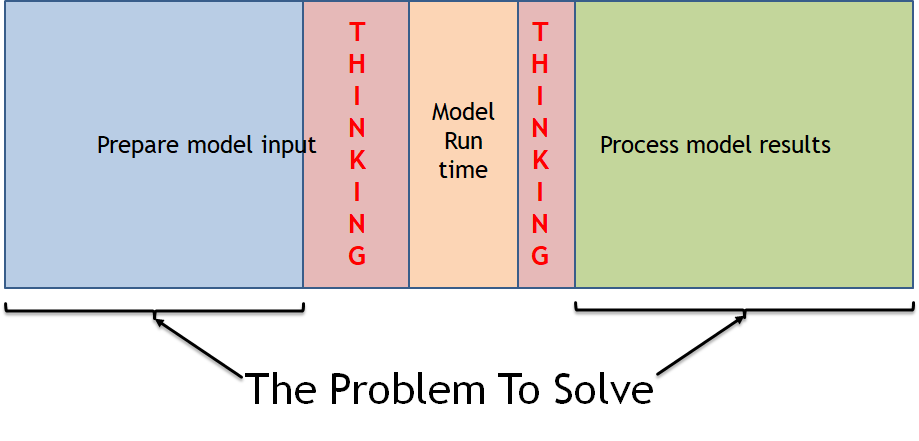First of all, I do NOT search for NOR make it a habit to look at cat videos. When I saw this video in my LinkedIn feed, it reminded me of so many people I have worked with over the years and a little bit of myself once in a while. The comment I made on it was “How much pain do people (not just cats) have to experience before they even try a different and potentially better approach to solving a problem?” The deeper question you have to ask yourself is, what is the REAL problem? Is it getting through the narrowing hole or is it getting to the other side of the obstacle in the way? That is where most of us get hung up and make ourselves willing to endure the pain.
Below is a very simplified depiction of half (the applicant’s side) of the dispersion modeling process.

The other half of the process (the regulator’s side) looks remarkably similar.

For the entire air quality permitting application process, the applicant’s half doesn’t look much different.

When you look at the individual steps involved in preparing the permit application and the dispersion modeling, or reviewing the application or modeling, very little high-level thinking is required, as depicted below.

The dispersion model preparation process is shown, but it is really true for preparing and reviewing the permit application and the modeling analysis.
What is the REAL problem? Is it regulators take too long to review the air quality applications and modeling? I would argue the whole process of preparing the materials for the regulators, handing off all the materials to the regulators, and having the materials reviewed is the bigger issue. But what IS the real problem?
Having been in this business for nearly 30 years, the real problem is both sides of the equation, the applicant and the regulator, spend way too much time and effort trying to force the same solutions through the ever-changing and narrowing regulatory process. In a nutshell, we spend too much time looking for what we need and too much effort on doing one-off manual tasks.

The current “solutions”, like expedited permits, spreadsheet templates, PDF forms (electronic paper), etc., have had little to no impact on overall time and resources spent on the air quality permit process. In some cases, the measures taken by regulators have made the situation worse as each agency has its own version of a solution, which requires applicants to have duplicate one-off “solutions”. These steps are well-intentioned but are akin to trying to squeeze through the narrowing passage of permit issuance.
At NaviKnow, we have proposed a better way. The solutions we pose are not something we can create and construct in a vacuum. We don’t believe in the “build it and they will come” business model. We will require input into the process and buy-in to the concepts from the regulators and the regulated. If you want to be a part of the solution, contact us to start the dialog.
To help you out, we have an air quality data portal to quickly and simply find much of the information needed for preparing or reviewing air quality permits and dispersion modeling analyses. It does require a login, but all the information is free. Over time, we will be adding more data, tools, and features. If you have any suggestions on how to make it better, let us know.
If you found this article informative, there is more helpful and actionable information for you. Go to http://learn.naviknow.com to see a list of past webinar mini-courses. Every (nearly) Wednesday (Webinar Wednesday), NaviKnow is offering FREE webinar mini-courses on topics related to air quality dispersion modeling and air quality permitting. We also have articles about air quality issues at http://naviknow.com/news. If you want to be on our email list, drop me a line at [email protected].
One of the goals of NaviKnow is to create an air quality professional community to share ideas and helpful hints like those covered in this article. So if you found this article helpful, please share it with a colleague.
